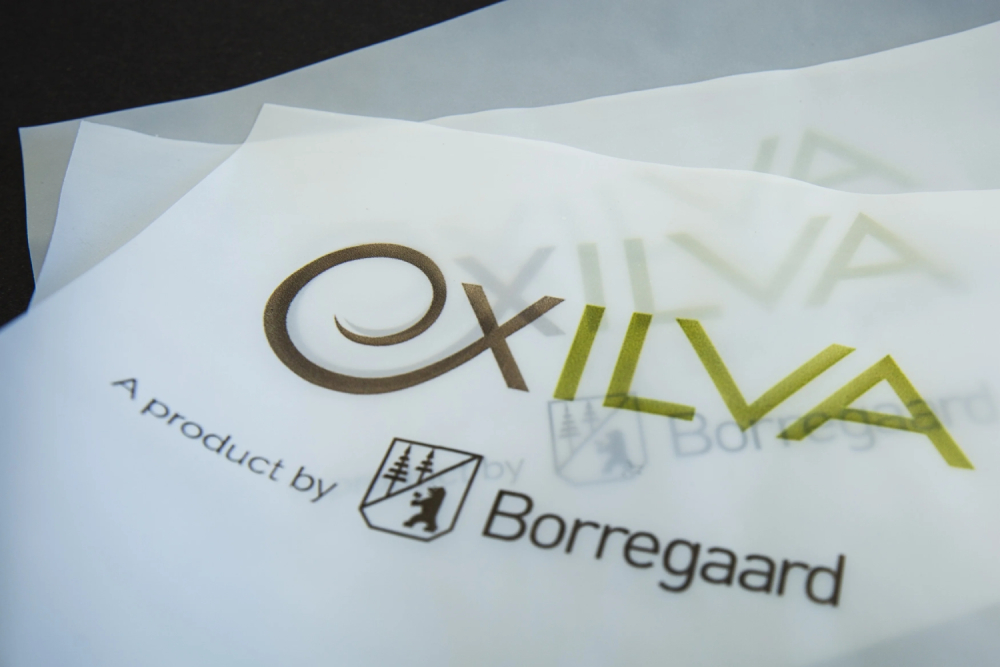
What makes cellulose fibrils a good oxygen barrier
Anni Karppinen | December 21, 2017
Cellulose fibrils has shown great potential as an oxygen barrier in packaging. This has led to numerous research projects trying to utilize the potential in practice. But how does the fibrils actually create the barrier towards oxygen?
Creating a film
I have written earlier about the water holding capacity of cellulose fibrils. In that blog post, I stated that cellulose fibrils form strong hydrogen bonding with water through the hydroxyl (OH) groups on the fiber surface. This together with strong inter-fibrillar connections lead to the fascinating properties that cellulose fibrils has in a water suspension, like water holding capacity and high yield stress. If we remove the water and break the bonding between water molecules and fibrils, the OH groups form strong bonding with the fibrils around them. This creates a very strong, dense film.
> Read more: Examples of EU projects studying MFC in packaging: NanoBarrier, Pulpacktion.
Stopping oxygen
How does the cellulose fibrils film then stop oxygen? There are two routes how the oxygen can go through the film: either through the fibers or through the voids between the fibers. The fibers have rather high crystallinity (over 60% according to Aulin et al.) which is known to hinder the transport of oxygen through the material. Therefore, the easiest path through the film is probably between the fibers, but even that route is quite well blocked.
The fibers are small, which means that they can pack together closely without leaving big voids. In addition, the inter-fibrillar forces are strong due to the above-mentioned hydrogen bonding. This leads to a very dense structure that does not let the oxygen molecules through easily.

Figure 1. MFC films made by Technical Research Centre in Finland (VTT) with continuous, patented film forming process. The films contain 30% of sorbitol to improve the elasticity. These dense, smooth films have oxygen permeability of 2.3 cc/m2/day at 50% humidity.
> Read more: What has cellulose fibrils to do with air quality?
Humidity
Cellulose is a hygroscopic material, meaning that it adsorbs water from the surroundings. When cellulose fibrils are dried to a film, the fibrils form strong hydrogen bonding with each other. These connections are partly so strong that re-dispersing the fibers is not possible (this is called hornification) and gives cellulose fibrils films mechanical strength even if they are wet. However, some water molecules are able to adsorb between the fibers and act as a softener in the material. This means that at high humidity, the oxygen barrier properties of cellulose fibrils are reduced since the fibers are not as densely packed as in dry conditions. You can see that in the table below which shows that the fibrils (MFC) has oxygen permeability of 0.011 (cm3µm)/(m2 day kPa) at 0% relative humidity and 300-500 times higher permeability at 50% relative humidity. However, both of these numbers are very low compared to some common plastics mentioned in the same table. According to Aulin at al. (2010), after 70% relative humidity the oxygen permeability starts to increase rapidly. In practice, this means that the fibrils must be protected from moisture by a hydrophobic layer if the application is exposed to moisture.
Table 1. Oxygen permeability values for cellulose fibrils (MFC) and typical plastics used in packaging industry (taken from Padberg et al. 2016 and Aulin et al. 2010).
| Material | Oxygen permeability (cm3µm)/(m2 day kPa) |
Relative humidity (%) |
| MFC | 0.011 | 0 |
| MFC | 3.52 - 5.03 | 50 |
| PET | 10 - 50 | 50 |
| PLA | 184 | 0 |
| LDPE | 1 900 | 50 |
In short, cellulose fibrils films consist of densely packed, high crystallinity fibrils that have strong inter-fibrillar bonding and this makes them good barrier for oxygen. Water can open the structure; it is therefore important to keep the film dry. As an additional benefit, this dense structure is also very resistant to oil and fat.
Download our bulletin to learn more on the topic:
Written by:
Anni Karppinen
